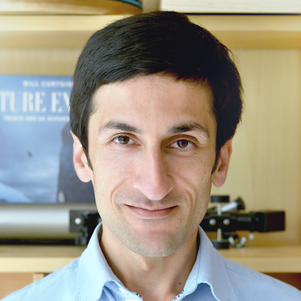Iman Esmaeil Zadeh joined ImPhys as Assistant Professor
As of May 2021, Iman Esmaeil Zadeh has been appointed as assistant professor in Optics research group. Dr. Esmaeil Zadeh has authored more than 25 peer-reviewed journal papers and has more than ten years of experience on the design, nano-fabrication, and characterization of photonic devices, superconducting detectors and the integration of semiconducting devices in photonic structures.
Biography:
After a bachelor degree in Electrical Engineering (Birjand university and Sadjad institute of technology, 2007, Iran), Iman Esmaeil Zadeh followed two master programs in System-On-Chip and Material physics and Nanotechnology simultaneously (Linköping university, Sweden). He then moved to TU Delft where he received a PhD in applied physics in 2016 on the integration of quantum light emitters, photonic circuits and superconducting nanowire single-photon detectors. After his PhD, he worked for two years at Single Quantum B.V. (SQ) as a research engineer. From Feb.2018- Feb.2021, he was with TU Delft as a postdoctoral researcher followed by another short industrial job as senior research scientist (SQ). As of May 2021, he has been appointed as assistant professor in Optics research group, department of Imaging Physics, in the faculty of Applied Sciences. Dr. Esmaeil Zadeh has authored more than 25 peer-reviewed journal papers and has more than ten years of experience on the design, nano-fabrication, and characterization of photonic devices, superconducting detectors and the integration of semiconducting devices in photonic structures.

Iman Esmaeil Zadeh
Research
My research is focused on two areas:
- Developing ultrahigh efficiency, ultrahigh time resolution, high count-rate, and ultralow dark count single-photon detectors based on superconducting nanowires: This research combines cleanroom nanofabrication, experimental ultrasensitive quantum optics measurements, as well as design and realization of cryogenic electronics. The detection of light at the single-photon level, the quantum limit, has been of interest to scientists for several decades, first as a conceptual challenge and more recently as a ubiquitous technology. Detection efficiencies >98% have been already demonstrated by several research groups and fundamental time resolution, for a low efficiency detector, has been shown to be <2.5ps. In Delft we have experimentally demonstrated >99.5% detection efficiency and <8ps time resolution. Our demonstrated near unity efficiency combined with ultrahigh time resolution enables a vast amount of applications ranging from fundamental quantum optics where high time resolution can make non-degenerate transitions indistinguishable to laser ranging where time resolution will result in unprecedented spatial resolution.
- Reconfigurable [quantum] nano-photonics: Experiments in optics have been at the forefront of modern physics with their implications extending far beyond physics itself, stretching into biology and philosophy. Most breakthrough experiments in modern optics so far have taken place using discrete free-space systems. These systems have excellent design flexibility but are bulky and difficult to scale. Great efforts have gone to the design and implementation of [quantum] photonic integrated chips, however, major challenges in scaling these systems still remain: 1- Tunability and re-configurability are required, 2- schemes for single-photon storage and retrieval are required. 3- Access to many optical and electronical channels (particularly for experiments requiring cryogenic temperatures) has proved to be a major challenge and hindered the progress. The goal of this research is to address these shortcomings and contribute in developing next generation reconfigurable [quantum] nano-photonic circuits. Thus far, we have demonstrated a number of key elements for the integration of sources and detectors and currently we are focus on developing fast reconfigurable photonic circuits with applications in imaging, spectroscopy and quantum photonics.